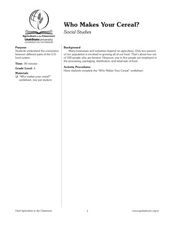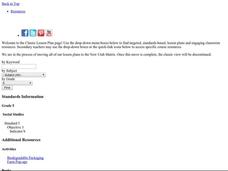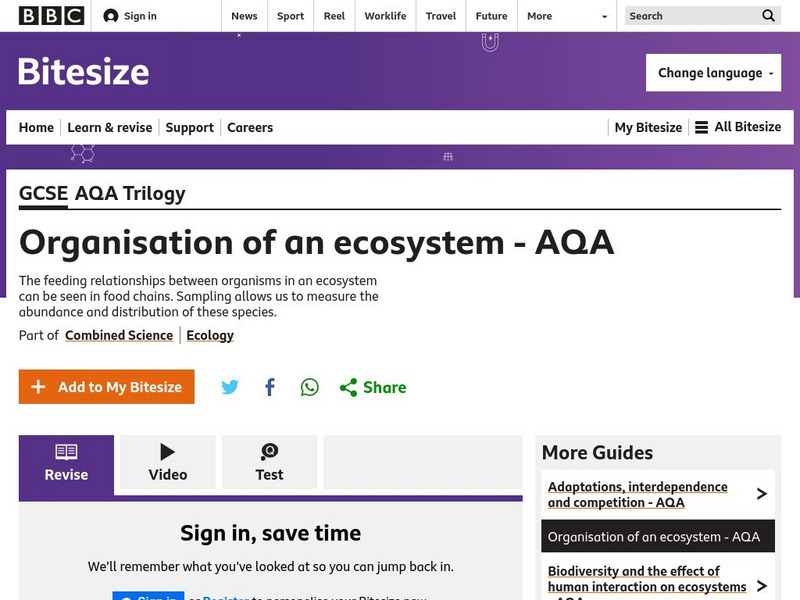Baylor College
Bio Build-up
Trace pollutants through the environment in the seventh lesson of this series on the science of food. Looking at a picture of the plants and animals in an aquatic ecosystem, learners use dot stickers to represent harmful chemicals as...
Curated OER
Fast Food Tomatoes
Here is a fantastic reading passage and discussion question to challenge your advanced learners. They read a passage describing arguments against the mass production of tomatoes for fast food resulting in poor treatment of workers. Then...
Curated OER
A Day Without Agriculture
Second graders define and create a list of agricultural products. In this producers and consumers lesson, 2nd graders participate in a contest to find as many types of agriculture as they can. The student who comes up with the best...
Curated OER
Agriculture Pays
Second graders role play one of the jobs related to agriculture and explain their role in getting one of the five "f's" of agriculture to the consumer. In this agriculture lesson, 2nd graders are assigned a role and a commodity. Each...
Curated OER
Forest Food Chains and Webs
Students explore forest ecological systems. In this ecology lesson plan, students classify forest plants and animals according to their ecological roles. Students play a related vocabulary guessing game. Students choose a card on which...
Curated OER
Prairie Food Chains & Webs
Students complete a food chain. In this ecosystem lesson, students learn about producers, consumers and decomposers. Students identify herbivores, carnivores and omnivores and complete two worksheets.
Curated OER
Price
First graders complete worksheets on producers and consumers and the total price of a group of items. In this price lesson plan, 1st graders read the book A Dollar for Penny in order to understand price, producers, and consumers, and...
Curated OER
Who Makes Your Cereal?
Fourth graders investigate how cereal is produced. In this agricultural lesson, 4th graders discuss where ingredients in cereal come from. Students use picture cards to identify the steps in producing cereal.
Curated OER
Ecosystem Interactions in Refuges
Seventh graders, using national parks as models, illustrate the energy flow in ecosystems. Working in groups, they use murals, flow charts, or other visual displays to record their findings. Students represent the food chains and webs...
Curated OER
Food Chains
Students investigate the food chain. In this ecology lesson, students define producers and consumers. Students use organism cards to demonstrate how the food chain works.
Curated OER
Recyclers to the Rescue
Fifth graders examine the concept of the food chain and define producer, consumer, herbivore, carnivore, and omnivore. They draw a food chain for a mouse and discuss the different organisms involved in the chain, and conduct an...
Curated OER
Source Search
Fifth graders discover how agriculture affects our daily lives. In this agriculture lesson plan, 5th graders investigate different products that originate from agriculture. Resources are provided.
BBC
Bbc: Gcse Bitesize: Adaptations, Interdependence and Competition
This lesson focuses on how plants and animals live together in a community or ecosystem by adapting, interdependence, and competition.
BBC
Bbc: Gcse Bitesize: Organization of an Ecosystem Aqa
This lesson focuses on the organization of an ecosystem. The feeding relationships between organisms in an ecosystem can be seen in food chains. Sampling allows us to measure the abundance and distribution of these species. It provides...















